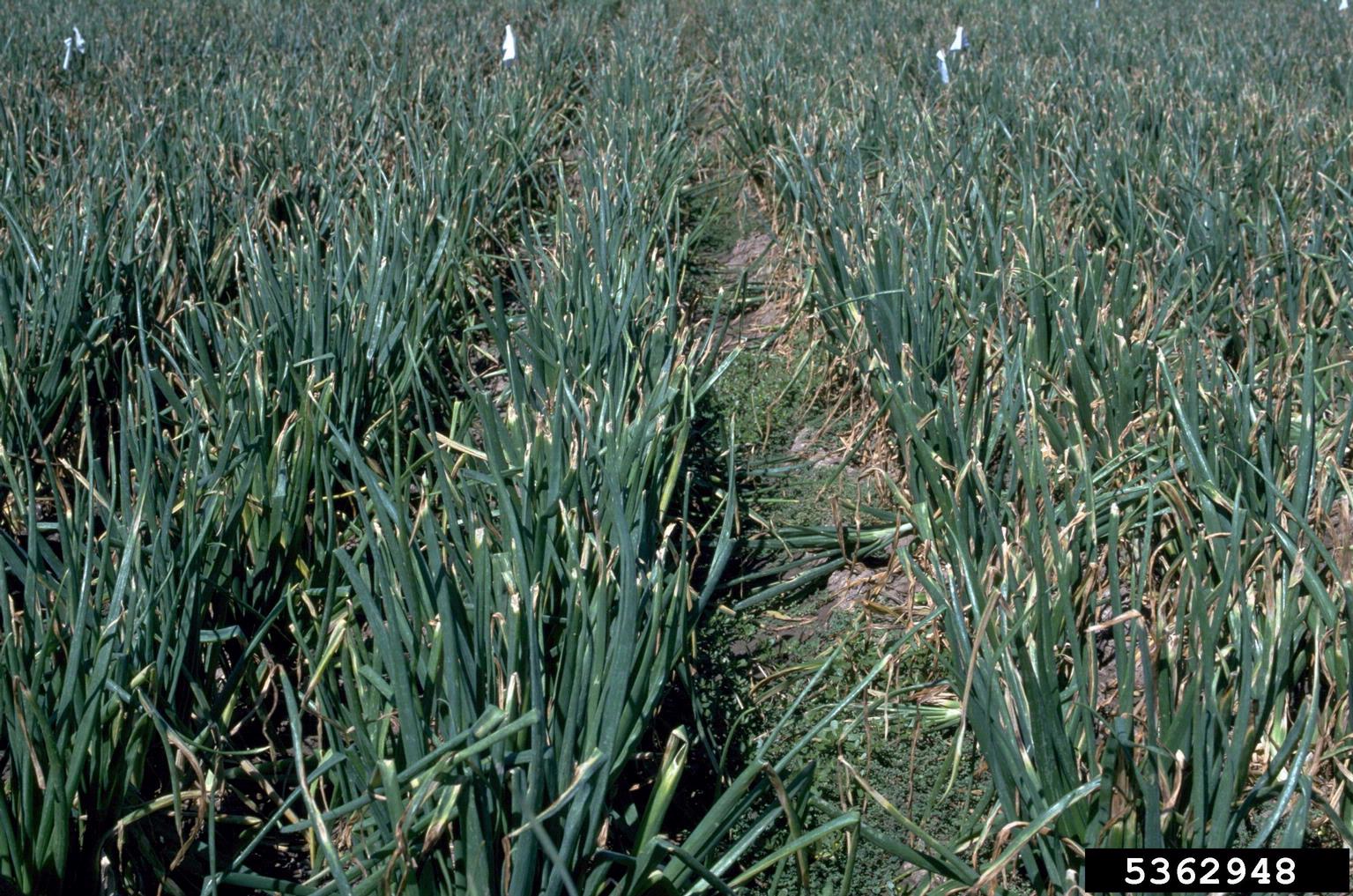Onion Bacterial Blight – Treating Onions With Xanthomonas Leaf Blight


Bacterial blight of onion is a fairly common disease of onion plants – depending on where you live – that can cause minor losses to a complete loss of onion crop, depending on environmental conditions. While mostly seed borne, onion bacterial blight can be spread by debris and infected volunteer onion plants.
About Xanthomonas Leaf Blight
Onion bacterial blight was first reported in the U.S. in Colorado but has now also been found in Hawaii, Texas, California, and Georgia. It also affects onions in South America, the Caribbean, South Africa, and parts of Asia. The disease is a bacterial infection caused by Xanthomonas axonopodis. The conditions favorable to an infection include moderately warm temperatures and high moisture or humidity. Plants with leaf wounds are more susceptible to infection. Outbreaks of the bacterial blight are more likely to occur after a period of wet, humid weather. After a storm is a time when onion plants may be especially susceptible because of the moisture and any wounds in the leaves caused by high winds. Overhead irrigation can also make onion plants vulnerable to infection. Onions with xanthomonas blight will show signs of the disease on leaves first. You may see white spots and then elongated, yellow streaks. Eventually, entire leaves may turn tan or brown. Older leaves are affected first, and affected leaves ultimately die. You won’t see rot in the bulbs, but they may not develop, and your yield may decrease significantly.
Managing Xanthomonas Blight in Onions
To prevent this infection in the first place, it is important to start with clean seeds. However, once in the garden, onion bacterial blight can spread in other ways. It may survive in debris or in volunteer plants. Pull out and dispose of any volunteers to avoid infecting your other onions and clean up debris at the end of each growing season. If you have an infection crop up in your onions this year, rotate your garden and put in a vegetable that is not susceptible to xanthomonas before you plant onions in that spot again. If your onions get damaged after a storm, use a nitrogen fertilizer to promote healthy leaves. Keep your onions well-spaced to avoid moisture between plants and to allow for airflow. If you take these steps, you should be able to avoid or manage an onion blight infection. If you choose to, there are copper-based bactericides that can be applied to kill the bacteria causing the infection.
Gardening tips, videos, info and more delivered right to your inbox!
Sign up for the Gardening Know How newsletter today and receive a free copy of our e-book "How to Grow Delicious Tomatoes".

Mary Ellen Ellis has been gardening for over 20 years. With degrees in Chemistry and Biology, Mary Ellen's specialties are flowers, native plants, and herbs.
-
 Create A Romantic Garden Straight Out Of Bridgerton: Regency Era Romance In Your Garden
Create A Romantic Garden Straight Out Of Bridgerton: Regency Era Romance In Your GardenTry some romantic garden ideas straight out of Bridgerton. Flowers and gardens in the Regency era were lush and charming and you can get the same look!
By Bonnie L. Grant
-
 Moody Blooms For Spring: 8 Types Of Black Flowers To Add Drama To Spring Displays
Moody Blooms For Spring: 8 Types Of Black Flowers To Add Drama To Spring DisplaysFrom midnight burgundies to inky violets, several types of black flowers can enrich and embolden a spring display. Try these brooding bloomers for a moody garden
By Tonya Barnett